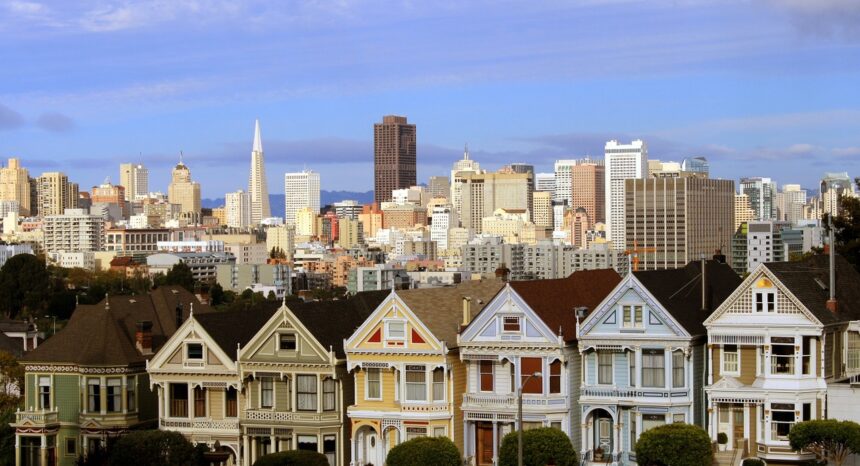As income inequality has risen in the United States, significant research and press coverage has been devoted to how Americans may be correspondingly “sorting” themselves into class-based, or high- and lower-income, communities, as well as to the rise of suburban poverty.
Data from recent decades suggest a fairly clear picture and trend-line. In a 2012 report, the Pew Research Center notes that rising inequality has “led to a shrinkage in the share of neighborhoods across the United States that are predominantly middle class or mixed income (to 76% in 2010, down from 85% in 1980) and a rise in the shares that are majority lower income (18% in 2010, up from 12% in 1980) and majority upper income (6% in 2010, up from 3% in 1980).” A 2013 study by researchers at Stanford and Cornell finds that “although the recent growth of income segregation in the 2000s has not been as rapid as the increase during the 1980s, it nonetheless represents a significant reversal from the flattening of the trend in the 1990s.” A recent analysis by the Brookings Institution shows how income inequality is playing out in major U.S. cities, which see higher disparities than the national average.
An emerging angle on this problem is how the geographical proximity of rich and poor municipalities can drive governance and civic policies, and may serve exclusionary goals and exacerbate difficulties for poorer people. If local governance is fragmented and dispersed among poor and rich neighborhoods, what are the consequences?
An April 2014 study published in Public Administration Review, “Separate, Unequal and Ignored? Interjurisdictional Competition and the Budgetary Choices of Poor and Affluent Municipalities,” analyzes Census data on all incorporated municipalities across all 362 metropolitan statistical areas in the United States and compares budgetary choices among nearby communities. The data indeed suggest that wealthy and impoverished jurisdictions coexist throughout America’s metropolitan areas, providing numerous case studies in how neighboring rich-poor communities may affect one another’s policies.
The study’s author, Benedict S. Jimenez of Northeastern University, examines how “interjurisdictional competition” plays out against a standard theory of inter-city fiscal competition, which argues that municipalities will compete with each other to provide the best package of services at the lowest tax burden for citizens. As a result of such competition, the theory stipulates, municipalities will offer citizens efficiently priced services. Citizens then “vote with their feet” and move to places that provide the best service package at the most affordable price. This is the traditional case for having a high degree of fragmented local government.
The study analyzes two key categories of municipal expenditures: (1) Developmental services such as “sewerage, waste management, utilities, highways, transit, and transportation” assist municipalities in attracting mobile capital, promoting growth and expanding the tax base; (2) Redistributive services such as “health, hospitals, public welfare and housing and community development” involve the “transfer of income from the well-off to low-income, often non-taxpaying residents.” (Education and emergency services spending are excluded from this analysis, the author notes, as they are more difficult to categorize precisely.)
The study’s findings include:
- As competition intensifies, “poor municipalities tend to spend more for developmental services and less for redistributive programs.”
- The data suggest that municipalities have a greater incentive to invest in policies to attract affluent citizens than to cater to the service needs of poor families: “In the hope of attracting development from other municipalities, poor municipalities tailor services according to the needs of mobile high-income households and firms rather than their underprivileged residents.”
- The way that rich and poor communities fund services differs significantly: “On average, governments in poor localities collect $57 in different types of local taxes and fees for every $1,000 in private income, whereas mixed-income jurisdictions collect $48, and affluent areas collect only $27. As for specific revenue sources, poor municipalities depend more on non-property-tax revenues as well as charges and miscellaneous fees in comparison with other jurisdictions.”
- One of the primary interests of wealthy residents seems to be to protect the fiscal wealth of the community. To achieve this objective, they will favor policies that curtail the access of less-wealthy individuals to their enclaves by “offering very few, if any, redistributive programs.” Further, “in comparison with poor municipalities, competition does not impose considerable policy constraints on affluent cities. These municipalities can vary their budgets depending on residents’ preferences and not necessarily on the need to compete for economic growth.”
- The study also provides some data that show the degree to which affluent communities are indeed the most segregated: “Of the 9,007 incorporated municipalities in the sample with complete data, 11%, or 957 jurisdictions, have very high concentrations of affluent families, whereas only 4%, or 323 jurisdictions, are classified as being very poor. A large majority of municipalities in the sample, 86%, or 7,727, contain a heterogeneous mix of income groups.”
Jimenez acknowledges that higher-level government redistribution programs — for example, Medicaid, Temporary Assistance for Needy Families and the Supplemental Nutrition Assistance Program — dwarf local municipal programs. Nevertheless, he concludes, the “empirical analysis suggests that in the local public market, some municipal services are provided the least in communities where they are needed the most,” particularly in those metro areas where there are high concentrations of affluent and poor families.
Keywords: poverty, inequality


Expert Commentary